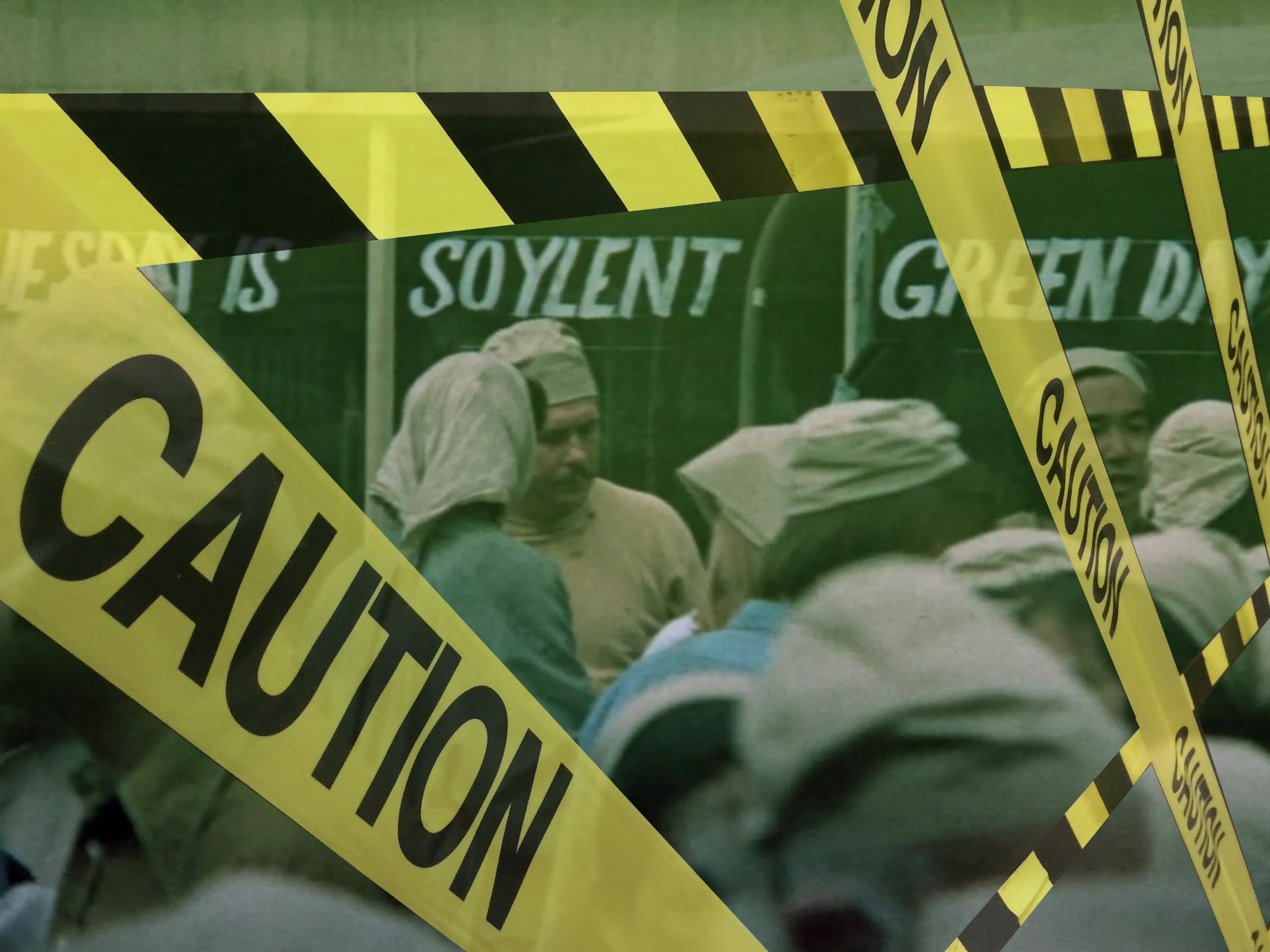
- Film
Cinematic Caution Tape: Are Movies our New Warning System?
The year is 2022. The Earth is overpopulated, and more than 40 million people are starving. Poverty has become a worldwide disease and the wealthy hide behind barricades for protection. The oceans are dying from pollution, and such generally taken for granted resources as fruits, vegetables and meats are almost extinct due to the effects of greenhouse gases.
While parts of that assessment might seem like a cable news breaking story, it is actually the plotline for the 1973 film Soylent Green. What seemed like a fantastical dystopian cautionary fable about the planet’s future is slowly planting its roots in reality. But that film hasn’t been the only opportunity Hollywood has taken to send up warning flares about the fragility of planet Earth. Filmmakers have dropped many environmental messages into populist films, although audiences might not see the forest for the trees as they down their popcorn and soda while enjoying the latest apocalyptic thrill ride.
When Thanos began to obliterate half of the world’s populace in Avengers: Infinity War to combat over-population, there was no ripple effect of a call to arms. When Godzilla emerged from the radioactive waters of Tokyo, did that inhibit the construction of nuclear power plants? And in Aquaman, when the ocean chose to revolt against the contaminated substances mankind had dumped into it, did anyone stop throwing away their plastic?
“More than ever, they’re missing the mark, often in the same way,” stated Michael Svoboda, a professor at George Washington University, to the New York Times back in 2019. “Almost none of these films depicts a successful transformation of society.”
But that doesn’t mean some aren’t trying. Roland Emmerich, known for the spectacular nature of his science fiction films, has been quite vocal about his use of those films to convey caution.
“We shouldn’t be as arrogant as we are,” he told the HFPA during an interview for his 2004 film The Day After Tomorrow, a movie that focused on a series of extreme weather conditions that ushered in a new Ice Age. “I think we should take better care of our planet. I was surprised myself when I read a book by some science-fiction writers, which at its core, is true science. I thought if they can do it, I can do it. If we keep going like this, something – maybe not as traumatic, but something very, very bad – will happen.”
With Avatar, James Cameron talked passionately about how he hoped the film would be viewed with the idea of people learning to get along with each other. As he told the HFPA when the film came out in 2009, “I don’t think there is anything wrong with having themes in movies that are both constructive and critical. I think that has always been the role of science fiction. It’s been a role of cinema – although curiously not in popular commercial cinema – which tries to keep the message out of it. They just want to sell tickets, but there is a way to do it artfully that is satisfying to people as entertainment.”
There have been successful films that have managed to integrate both aims. Both Erin Brockovich and A Civil Action turned their cinematic eye toward water contamination. Outbreak and Contagion explored the pandemics of rapidly spreading viruses. The Grapes of Wrath and Interstellar each tackled the repercussions of a dust bowl catastrophe. Nuclear warnings came in the form of The China Syndrome, Fail Safe, Dr. Strangelove and War Games, while recycling had its spotlight with Wall-E. And with the theme of Mother Nature running rampant, we have witnessed Twister, A Perfect Storm, Volcano, The Impossible, Earthquake and San Andreas.
Though fictional films have proven effective in showcasing the fragility of our environment, it is, without doubt, the genre of documentaries that has elevated the conversation of conservationism and protection. No film turned the tide more than An Inconvenient Truth, overseen by former Vice President Al Gore.
Pushing back against the perception that climate change is invisible to most people going about their daily lives, Gore, who continued the examination in the sequel, An Inconvenient Sequel: Truth to Power, outlined his vision to the HFPA back in 2017.
“All over the world, we now have a sustainability revolution, with climate solutions at the center of it. And if you look back over human history, we had the Agricultural Revolution and the Industrial Revolution and the Information Revolution. This sustainability revolution is unique: it has the scope of the Industrial Revolution, and it affects everything, but it has the speed of the Information Revolution because it is in large part digitally powered and is driven by a constant new research and development.” And the best way he sees to showcase it is through the movies.
“Film is a medium that can affect the consciousness of the people,” he explains. “Along with other factors, it can move them to new points of view, give a new appreciation of what the scientists are telling us, in this case, about the climate process, and what the business leaders are telling us about the availability of the solutions to the climate process.”
Other noteworthy documentaries that have turned their eye to highlighting ecological and environmental causes, and in some cases secured prominent voices in the entertainment industry to narrate, have included The Cove, The 11th Hour (Leonardo DiCaprio), Dirt: The Movie (Jamie Lee Curtis), The Human Experiment (Sean Penn). A Fierce Green Fire (Meryl Streep) and Vanishing of the Bees (Elliot Page).
If movies and documentaries continue to call for awareness, the majority of the heavy lifting must come down to people: heeding the warnings and participating in helping to make the planet a safer and more secure place to live.
If not, the film Soylent Green just might become a documentary.